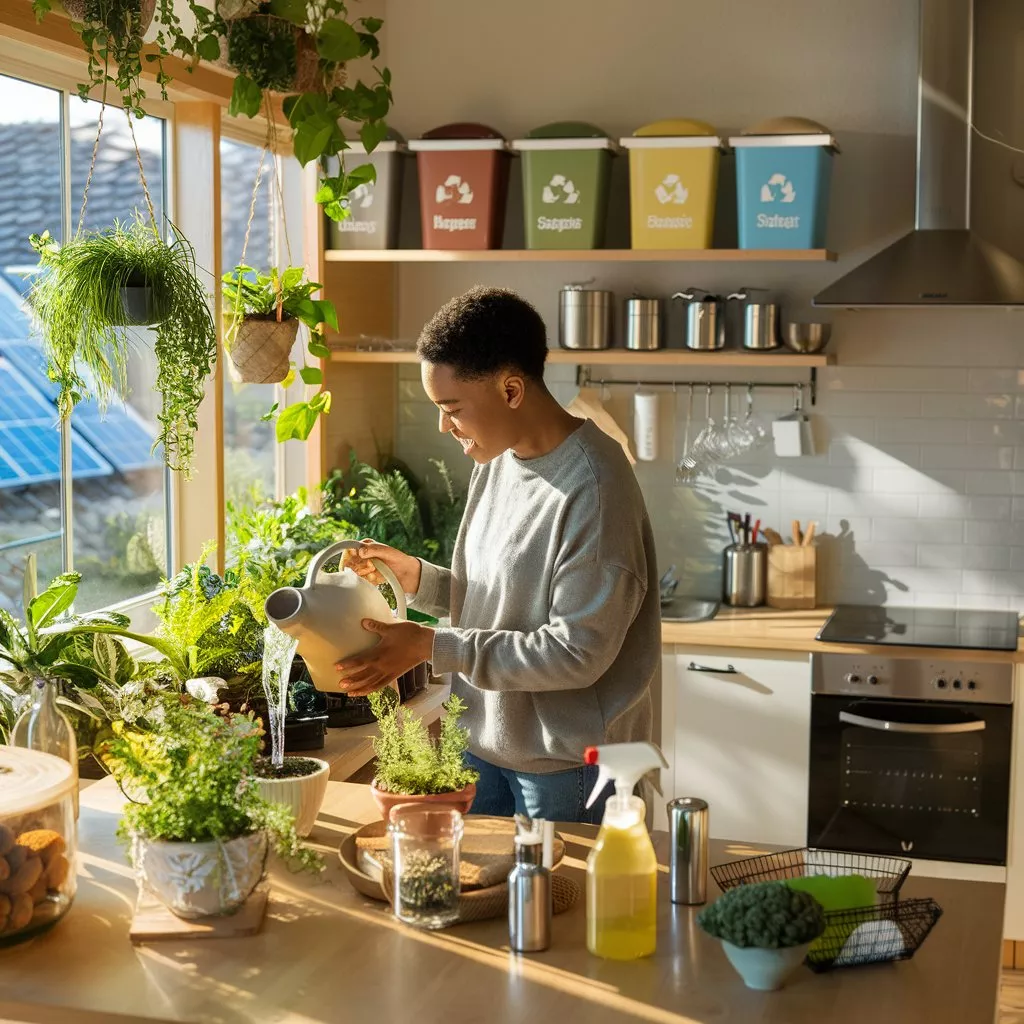Embracing an eco-friendly lifestyle doesn’t have to be overwhelming or expensive. By making small, manageable changes to your daily habits and home environment, you can significantly reduce your ecological footprint and contribute to a healthier planet. Here are some practical tips to help you create a greener home.
1. Reduce, Reuse, Recycle
The three Rs—reduce, reuse, recycle—are fundamental principles of sustainable living.
- Reduce: Start by minimizing waste. Opt for products with minimal packaging and buy in bulk to reduce the amount of packaging waste.
- Reuse: Invest in reusable items such as cloth shopping bags, stainless steel water bottles, and glass food containers. Avoid single-use products whenever possible.
- Recycle: Set up a comprehensive recycling system in your home. Ensure you have separate bins for paper, plastic, glass, and metal, and educate yourself on your local recycling guidelines.
2. Conserve Energy
Reducing energy consumption not only lowers your utility bills but also decreases your carbon footprint.
- Switch to LED Bulbs: LED bulbs use up to 80% less energy than traditional incandescent bulbs and last significantly longer.
- Unplug Electronics: Even when turned off, many electronics continue to draw power. Unplug devices when they are not in use, or use a power strip to easily switch off multiple items at once.
- Energy-Efficient Appliances: When it’s time to replace old appliances, choose energy-efficient models. Look for the ENERGY STAR label, which signifies that the appliance meets energy efficiency guidelines.
3. Use Eco-Friendly Cleaning Products
Conventional cleaning products often contain harmful chemicals that can be detrimental to both the environment and your health.
- Natural Cleaners: Use natural cleaning products like vinegar, baking soda, and lemon juice. These are effective, inexpensive, and safe for the environment.
- Biodegradable Products: Choose biodegradable and non-toxic cleaning supplies. Many eco-friendly brands offer a range of products that are both effective and environmentally safe.
4. Save Water
Water conservation is crucial for sustainability.
- Fix Leaks: A dripping faucet can waste a significant amount of water over time. Repair leaks promptly to conserve water.
- Low-Flow Fixtures: Install low-flow showerheads and faucets to reduce water usage without sacrificing water pressure.
- Shorter Showers: Try to limit your showers to five minutes. This simple habit can save gallons of water each day.
5. Grow Your Own Food
Growing your own fruits, vegetables, and herbs can reduce your carbon footprint and provide fresh, organic produce.
- Indoor Plants: Start with easy-to-grow herbs like basil, mint, and parsley on your kitchen windowsill.
- Community Gardens: If you don’t have space for a garden at home, consider joining a community garden. This not only allows you to grow your own food but also connects you with like-minded individuals.
6. Choose Sustainable Materials
Opt for eco-friendly materials in your home furnishings and renovations.
- Bamboo and Cork: These are sustainable alternatives to traditional hardwood. They grow quickly and can be harvested without causing long-term damage to the environment.
- Recycled Materials: Look for products made from recycled materials, such as furniture made from reclaimed wood or rugs made from recycled plastic bottles.
- Organic Textiles: Choose bedding, towels, and clothing made from organic cotton, linen, or hemp. These materials are grown without the use of harmful pesticides and chemicals.
7. Adopt Renewable Energy
Consider integrating renewable energy sources into your home.
- Solar Panels: Installing solar panels can significantly reduce your reliance on fossil fuels and lower your energy bills. Many governments offer incentives for homeowners who install solar energy systems.
- Wind Turbines: If you live in an area with consistent wind, a small wind turbine can be an excellent source of renewable energy.
8. Reduce Plastic Usage
Plastic pollution is a significant environmental issue. Reducing plastic usage can help mitigate this problem.
- Avoid Single-Use Plastics: Say no to plastic straws, utensils, and bags. Instead, carry reusable alternatives.
- Choose Glass or Metal: Use glass or metal containers for food storage instead of plastic. These materials are more durable and environmentally friendly.
9. Support Sustainable Brands
Support companies that prioritize sustainability and ethical practices.
- Research Brands: Before purchasing, research brands to ensure they follow eco-friendly practices.
- Local Products: Buy local products to reduce the carbon footprint associated with long-distance transportation. Local products also support your community’s economy.
10. Educate and Advocate
Educating yourself and others about the importance of eco-friendly living can amplify your impact.
- Share Knowledge: Talk to friends and family about the changes you’re making and why they matter.
- Community Involvement: Get involved in local environmental groups or initiatives. Advocacy and collective action can drive significant change.
Adopting an eco-friendly lifestyle is about making conscious choices that benefit both the environment and your well-being. By implementing these small changes in your home, you can contribute to a greener, more sustainable future. Start with a few adjustments and gradually incorporate more practices into your daily routine. Remember, every small step counts towards making a big difference.
